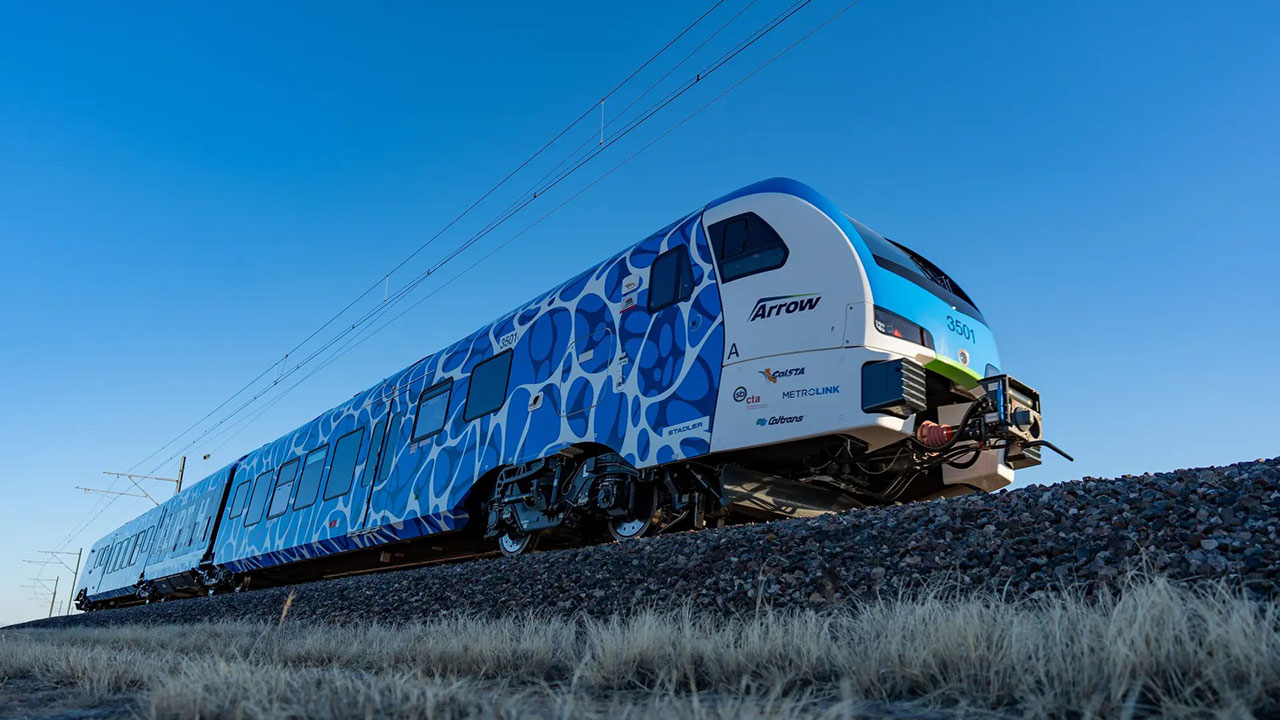Efforts to reduce emissions from trains are already underway, with significant investment in electrifying networks globally, as well as introducing battery-electric locomotives like the FLXDrive, Blues train, and Flirt Akku.
Stadler Rail AG produced the train in the last example, which set a Guinness World Record in 2021 for the longest per-charge battery-only journey of 224 km (~140 miles) on a route between Berlin and Warnemünde during a freezing local winter. This achievement is impressive considering the train was designed with an operational per-charge range of only 80 km.
However, it is important to note that not all rail networks can support electrification, and the limited battery range makes it unsuitable for long-haul transportation of goods or people. Hydrogen could enable extended travel while emitting only steam and water.
Stadler introduced its Flirt H2 passenger model at InnoTrans 2022 in Berlin and began testing in Switzerland. The train is designed to replace diesel-powered trains on non-electrified or partially electrified networks. It features two motor-driven end cars with a hydrogen tank and fuel cells in between. The fuel cells provide energy to an onboard battery, which powers the electric drive.
Originally designed for the San Bernardino County Transportation Authority in California, the Flirt H2 reportedly has a top speed of 127 km/h (79 mph) and a range of 460 km (286 miles) per refueling stop. However, during testing at the ENSCO test circuit in Pueblo, Colorado, the range figure was exceeded, setting a new record for Stadler.
On the evening of March 20th, the Flirt H2 completed its first lap of the track. Engineers alternated control for over 46 hours, during which the train traveled 2,803 km (1,741.7 miles) on a single tank of hydrogen.
Although we lack information on the speed average and the capacity of the fuel-cell system (although Hydrogen Insight reports that the SBCTA model features '12 fuel cells at 100 kW each'), and whether green hydrogen was used as the fuel source, this is still a significant milestone.
Stadler has also announced that two Italian rail operators have signed contracts for the supply of 15 hydrogen-powered trains between them in addition to confirmed orders in California.
Source: Stadler Rail

